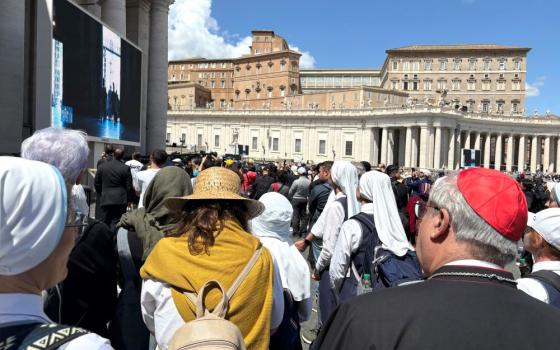The bishop of a southern Italian diocese has issued new directives aimed at keeping the mafia out of this year's Easter processions.
Commonly called "L'Affruntata" (the encounter), the popular and traditional Easter Sunday procession involves bringing together three statues -- one of Jesus, the apostle John and Mary, who is caped in a black robe. The Marian statue's black robe is removed at the end of the procession to symbolize her joy over Jesus' resurrection.
But the infiltration of the mafia in the Easter procession and religious celebrations as a way of asserting its power in southern Italy has been both common and contentious.
Last year, Bishop Luigi Renzo of Mileto-Nicotera-Tropea stood behind parishioners in the town of Sant'Onofrio, who opted to cancel their Easter procession rather than allow the infiltration of the mafia or let civil authorities determine how they would celebrate. The bishop decided to celebrate a Mass instead.
However, in July 2014, he banned a procession outright in another Calabrian town when authorities said men with suspected mafia ties were slated to carry the statue of Mary. Earlier that month, a procession in a neighboring diocese made international headlines and caused public outcry in Italy, after people carrying a statue of Mary stopped in front of the house of a presumed mob boss and tilted the statue forward, as if bowing in homage.
While the Calabrian bishops published joint guidelines last fall, Renzo issued a new set of regulations in March for all processions in his diocese.
In a section particular to the Easter procession, Renzo urged the faithful to reclaim their traditions and "not to allow themselves to be dispossessed of their most genuine religious heritage by leaving it in the hands of unscrupulous people."
He also exhorted priests to be "more courageous and united" in offering "new signs of presence and hope" to the people.
"Concrete signs of breaking with certain bad habits are needed," the bishop told the priests. He also encouraged them to entrust the role of carrying the statues to young people active in the parishes and to make them "protagonists" in organizing the procession.
Among the new general rules: Processions are forbidden to stop in front of any people, homes or buildings, other than hospitals or long-term care facilities; routes must be established ahead of time in consultation with the pastor; those carrying statues must be active members of the parish and chosen by the pastor, along with the parish council; for the Easter procession, those carrying statues are selected from among parishioners in a lottery on Palm Sunday; people who are members of organizations "condemned by the church" cannot carry statues; if the procession route is long, a second group of parishioners must be selected ahead of time to help carry the statues -- not just anyone along the route can act as a substitute.
The new regulations took effect March 1.

